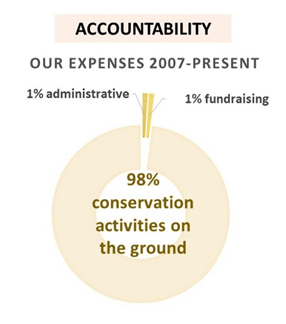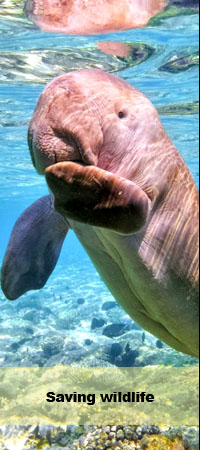|
There have been five mass extinction events in the Earth's history, each wiping out between 70% and 95% of the species of plants, animals and microorganisms. The most recent, 66 million years ago, saw dinosaurs disappear. The past events were caused by catastrophic alterations of the environment, including massive volcanic eruptions or collision with an asteroid. The sixth mass extinction -- the one happening now -- is very different, it's caused solely by humans.
The global rate of species extinction is already tens to hundreds of times higher than it has been, on average, over the last 10 million years. One million of the planet's eight million species are already threatened with extinction by humans. The formerly common are rapidly becoming rare. In North America alone, 20 common bird species — more than half a million individuals each — declined more than 50 percent in the last 40 years.
Gandhi said that “what we each do seems insignificant, but it is most important that we do it.” It can be something little and local, or maybe something big. In the humblest beginnings of individual effort, big things can incubate. Supporting Endangered Species International (ESI) means that your gift is very efficient as we spend 98 percent of all donations into field projects to save wildlife and wilderness.

Photos: Many amphibians and lemurs are on the brink of extinction; however, they can be protected and can recover their populations.
Wildlife protection works
The black rhino had declined 98 percent from its 1960 numbers because of poaching; despite the loss of one subspecies, aggressive conservation has allowed their numbers to double to about 5,000. Gray whales were hunted to extinction in the Atlantic and hang on with perhaps just 150 in the Asian North Pacific, but they’ve recovered spectacularly along the West Coast of North America and are often seen from shore from Baja California to Alaska. So long as there is one population left, however bleak the landscapes from which it is missing, there are conservation opportunities for Endangered Species International (ESI). ESI works tireless to support recovery and protection for threatened species around the globe.
Saving habitats works
For cheetahs, it is African savannas like the Serengeti. For heelsplitter mussels, it is the muddy side channels of the Mississippi River. For the elusive Boto dolphin, it is the majestic Amazon river. For parasite Symbion pandora, it is the lips of Norwegian lobsters. For the lowland gorillas, it is the deep rainforest of western Africa. Habitats are homes where species can find food, shelter, reproduce, and live freely. Protecting and saving habitats work. ESI has successfully protected a myriad of critical habitats including rainforests, wetlands, and coral reefs. Together, we can intensify one of the most effective conservation opportunities of our time.
Reducing illegal wildlife trade
Wildlife is increasingly threatened by legal and illegal unsustainable trade. Animals and plants are traded for consumption, biomedical research, and zoo and wildlife collections; as pets; for the sale of body parts (bodies, skins, hair, and skulls) used in traditional medicine; as talismans and trophies; and for magical purposes. As illegal poaching occurs at the source country, ESI conducts actions on a local level. This involves conducting strategies for the prevention and detection of illegal taking, as well as involving communities.
We must intensify our direct and extensive conservation actions to save critical species and habitats. Increasing field conservation efforts are a fundamental step in reversing declines, and your continuous support is more crucial than ever.

|











